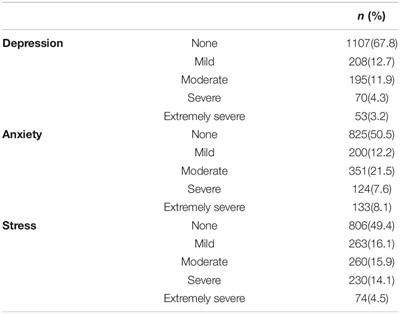In recent years, support of psychodynamic psychotherapy for the treatment of schizophrenia spectrum and other forms of psychosis has diminished. This is not entirely a result of lack of validity or efficacy, but rather an investigative shift from traditional methods of therapy to more novel approaches. However, according to a recent study led by Bent Rosenbaum of the Department of Psychology at the University of Copenhagen in Denmark, psychodynamic therapy is still one of the most effective forms of treatment.
Rosenbaum compared treatment as usual (TaU) to TaU with supportive psychodynamic psychotherapy (SPP) in a sample of 269 adults admitted for psychosis. The participants were measured for global functioning and symptom severity before, during, and after the two-year treatment period. Rosenbaum found that the SPP group improved far more than the TaU group with respect to all levels of functioning and symptoms of psychosis. Over the course of two years of treatment, there were significant gains on social functioning and significant decreases on maladaptive symptoms for the participants in the SPP group.
These findings demonstrate that psychodynamic therapy and the core elements associated with that approach can still adequately serve the needs of many individuals with schizophrenia and other psychotic issues. Rosenbaum believes that when working with psychotic clients, clinicians should focus on the fundamental aspects of psychodynamic therapy. This includes overcoming obstacles to emotional processing, mental functioning relating to sense of self, and the development and maintenance of relational bonds. Cognitive development and attention to the present should also be incorporated to ensure maximum benefits for clients who struggle with these issues.
Rosenbaum hopes that this research will bring clinicians back to SPP and approaches of that kind. “It furthers recovery when it is used as a supplement to medical and social treatment modalities.” He added, “SPP should thus be taken into account as a modality in future research and treatment.” Doing so will open avenues of treatment for clients with varying levels of mental illness.
Reference:
Rosenbaum, Bent, Susanne Harder, Per Knudsen, Anne Koster, Anne Lindhardt, Matilde Lajer, Kristian Valbak, and Gerda Winther. Supportive psychodynamic psychotherapy versus treatment as usual for first-episode psychosis: Two-year outcome. Psychiatry: Interpersonal & Biological Processes 75.4 (2012): 331-41. Print
© Copyright 2013 GoodTherapy.org. All rights reserved.
The preceding article was solely written by the author named above. Any views and opinions expressed are not necessarily shared by GoodTherapy.org. Questions or concerns about the preceding article can be directed to the author or posted as a comment below.
Transition towards ending therapy in SPP is always gradual. Certain themes and previous self-destructive ways of thinking and relating are no longer repeated, and the termination phase can be felt as a potential new beginning.
Four to six months prior to ending, the therapist summarises what has been worked with thus far and what they think the patient will still have to deal with, will need to think about or is likely to encounter. Time is taken to talk about how the patient might be able to handle the termination of therapy. What thoughts and feelings does the ending provoke? What strategies may be used to help with the ending? What precautions might need to be taken concerning difficult situations in the future?
About 1 month before the end, a summary is prepared of what has been accomplished and what still remains to be worked on either by the patient alone or in a possible future therapeutic setting. In the summary, emphasis is put on those areas in which the patient has recovered autonomy and made progress. The therapist points out in very concrete terms how the gains can be put to good use. New perspectives are always presented to the patient in such a way that they can see the ideas as options, but not as the only possibility.
During the termination phase, the therapist invites the patient to give them feedback about their manner of relating, helpfulness, availability or unavailability, ability to listen, etc. The therapist highlights ‘blunders’ that may have affected the patient and from which the therapist has learnt.
During the entire termination phase it is important that the therapist remains empathic with the patient’s experience of the shortcomings of the therapy and where there has not been (sufficient) progress. The termination phase should have the character of a joint project coming to a close that both parties have learned from and from which the patient is now going to have to find new ways of moving forwards by themselves.
Case vignette
Anna was offered SPP a few weeks after she first presented to an early psychosis service. She had seen a psychiatrist, accepted a prescription for an antipsychotic and was having regular contacts with a care coordinator, who was helping her address some practical issues with college and accommodation and discussing with her practical strategies for coping with voices and paranoia. Anna’s distressing psychotic symptoms and suicidal thoughts had already subsided significantly, but she was continuing to feel very wary of other people and finding it hard to leave the house or to be alone for long.
Anna agreed with the team that her symptoms might be linked in some way to her very difficult childhood experiences. Her mother had had a violent partner and suffered recurrent depression with suicide attempts and hospital admissions; and in addition to the lack of care and safety as a result of her mother’s mental health problems, Anna herself had been sexually abused by her stepfather.
The team offered Anna CBT but she said that although she did think she needed counselling, she had had some CBT before and did not want more. She declined family appointments as she did not want to make her mother anxious about her. The team discussed Anna’s situation with a psychodynamic therapist and agreed that SPP might be offered to her. The care coordinator and psychiatrist were already familiar with the approach and able to discuss with Anna what it entailed. Before the therapy started, the team met with the therapist and talked about what Anna’s therapy might involve.
Over the first 6 sessions, the therapist talked with Anna in detail about her life, her view of herself and her relationships with important people throughout her life. He explored the content of Anna’s psychotic symptoms and how these seem to relate to her daily life now and to her past. In that connection the therapist suggested that Anna was perhaps harbouring ‘lack of safety’ feelings, fear of not being met with positive feelings from others and fear of not being accepted. The therapist also talked with Anna about the purpose of therapy, about practical arrangements and the importance of trying to discuss in therapy such things as suicidal thoughts. Anna told her care coordinator that she felt the therapist was very nice, but she thought therapy would be hard work.
In the following weeks the therapist discussed with Anna ideas about a dynamic formulation of her problems and strengths, covering her healthy functioning as well as the problems that she and the therapist had identified. The therapist’s hypotheses were developed with the help of reflection on his countertransference in the here-and-now and in his supervision as well as from listening to the pain of Anna’s childhood story and its repetition in her present life where it was expressed both by anxiety and anger. For example, the therapist noticed he was feeling unusually confident of being valued and able to help, and also noticed that Anna sometimes tended to avoid eye contact when he spoke to her. He hypothesised that Anna found it difficult to experience negative feelings about people she was depending on for help. He thought that that this was likely to be related at least in part to Anna having experienced her most important early attachment figure, her mother, as unable to face anger or criticism without collapsing. This left Anna feeling that anger or other dissatisfied feelings were inevitably destructive. Her previous psychotic fragmentation protected her from experiencing this in relationships.
Over the next 3–4 months, Anna would come to therapy with accounts of current concerns about her life, and with the support of the therapist was able to see some repeating patterns in these which related to the themes that she and the therapist had agreed seemed important. Anna said she thought the therapy was helping her understand herself better.
At the same time in Anna’s life outside therapy, things seemed very stuck. She was still rarely seeing friends and said she felt too anxious to leave the house. At a review meeting, she said she could not manage anything else in addition to the therapy because therapy took up so much of her energy. The team began to express concerns about whether this therapy was right for Anna. The therapist himself started to feel anxious that the therapy was already almost half way through the planned 12 months, and might end without Anna achieving anything. Anna then started to speak about what happened with her stepfather. Her voices and paranoia got worse.
It was now 5 months before the date the therapy was due to end, and the therapist started to talk to Anna about this. His countertransference was of feeling uncomfortably aware of how he would have preferred to be able to offer Anna a longer time, and he considered bending the rules for her. Anna made no eye contact and seemed to lose focus, then said that she felt too tired to talk. Later, she explained that at this point her voices had been particularly loud and contemptuous of herself and the therapist. There was a similar pattern in the following sessions whenever the therapist made any reference to the time remaining. The therapist commented that conversations about the length of therapy seemed very difficult for Anna, and Anna suddenly looked him in the eye and said she felt really disappointed, she had really thought the therapy was going to be the thing that made a difference to her, and she didn’t think the therapist understood just how hard it had been for her to come. The therapist encouraged Anna to say more about feeling let down. Anna said the voices had disappeared as she spoke and the therapist observed that Anna had been able to make eye contact throughout this whole conversation.
In the last few months of the therapy, Anna talked about some new developments in her life. For the first time she had been talking to her mother about her abuse and about feeling let down by her, and she felt closer to her mother rather than worried about her. She had started to go out with friends regularly. She had talked to them about being ill and been surprised at their supportive responses. She had re-started her college course and begun some voluntary work. Her voices and paranoia had been less prominent and her psychiatrist had suggested reducing her medication.
A few weeks before the therapy ended the therapist spent some time writing a letter for Anna in which he talked about some of this along with other themes in the therapy.
In the final session, Anna talked about her sadness at losing the therapist’s support and cried a little. However, she showed no sign of difficulty with eye contact. She said that since she had spoken about feeling annoyed and disappointed that the therapist had limited the length of the therapy, she could think about its end without hearing any voices.




